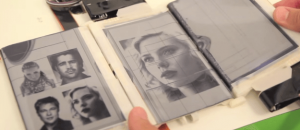Let’s be honest here. Smartphone cameras are convenient, but a lot of them just plain suck in low-light conditions. Sometimes the resulting images can come out grainy, and other times they end up being much too dark. Photo editing software can often work miracles, but with shoddy low-light images there’s really not much you can do.
That may change in the near future however, thanks to a unique component that has been developed by Swiss researchers. They’ve developed a molybdenite light sensor which they claim is five times more accurate in low-light conditions than modern technology. In other words, with the new tech you’ll be able to capture much better photos.
To break it down in layman’s terms (and this is going to be a fairly simple description for you expert geeks and photographers out there), the modern technology allows each pixel to separately fire off an electrical charge in direct response to exposure. The camera software, also known as the firmware, compiles all of the individual charges into one complete image. Unfortunately, to produce a charge those pixels need to experience a certain amount of light otherwise they produce less than nominal results.
With molybdenite, the pixels ultimately require less light or energy to create a charge or image. That means the resulting image should produce a much better picture in terms of exposure and light.
Professor Andras Kis, the team leader for Ecole Polytechnique Fédérale de Lausanne (EPFL) designed a unique sensor that makes use of the molybdenite mineral. According to the team, the proof-of-concept sensor was able to produce one fifth the amount of energy as modern tech, with its single pixel.
To translate, better imaging technology should be on the way soon enough!
Even better, molybdenite is both abundant in nature and inexpensive to acquire just like silicon. That means it’s just as viable to use for development. Professor Kis even says using molybdenite “would make it possible to take photographs using only starlight.”
Can you imagine? Taking crystal clear images by just the light of the stars?
Professor Kis also said:
“Our main goal is to prove that MoS2 [molybdenum disulfide] is an ideal candidate for this kind of application.”
As always, check out the source and via links for more information.
[via Gizmag, EurekAlert!, EPFL]

 Email article
Email article




